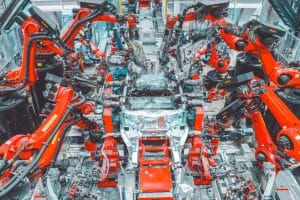- 🤖 BMW partners with robotics startup Figure for humanoid robots in car production.
- 🚗 Initial small-scale launch in Spartanburg, South Carolina, with potential expansion based on performance.
- 👥 Robots designed to work safely alongside humans in manufacturing facilities.
- 🌐 Figure’s vision includes addressing workforce shortages and reducing unsafe jobs using humanoid robots.
- 📈 Tesla, Honda, and Hyundai have also explored the use of robots in their factories.
- 🌌 Figure’s long-term plan involves humanoid robots in Physical labor, Consumer Household, and Off-World applications for space exploration.
In a groundbreaking move towards the future of manufacturing, BMW has recently forged a partnership with the robotics startup, Figure. This collaboration marks a significant step in the automotive industry’s integration of humanoid robots into the production process, promising efficiency, safety, and a glimpse into what the future holds for car manufacturing.
Unveiling the Partnership
BMW’s venture into humanoid robots comes as a result of their partnership with Figure, a robotics startup that has been making waves since its founding two years ago. The German automaker is set to initiate a small-scale launch of humanoid robots at its facility in Spartanburg, South Carolina. This strategic move is accompanied by the potential for expansion, contingent on the robots meeting performance targets.
Designing for Coexistence
One of the most intriguing aspects of this collaboration is the design philosophy behind these humanoid robots. BMW and Figure have worked meticulously to ensure that these robots can work safely alongside human employees within manufacturing facilities. This emphasis on human-robot collaboration is not only groundbreaking but also addresses concerns about the integration of automation in traditionally human-centric work environments.
Addressing Workforce Shortages and Enhancing Safety
Figure’s overarching vision goes beyond mere automation; it encompasses a proactive approach to addressing workforce shortages and minimizing risky jobs through the use of humanoid robots. The idea is to have these robots act as collaborators, allowing for increased productivity while reducing the reliance on human labor in potentially hazardous tasks.
Industry Trends: Tesla, Honda, and Hyundai
While BMW is making strides with humanoid robots, it’s worth noting that other automotive giants have also explored the integration of robots into their manufacturing processes. Tesla, for instance, introduced its Optimus bot several years ago, with continuous advancements, including the latest iteration unveiled in December. Similarly, Honda and Hyundai have delved into the realm of robotics to handle tasks deemed dangerous on assembly lines.
A Glimpse into the Future
What sets Figure apart is its comprehensive “Master Plan,” reminiscent of Tesla’s approach, outlining three major business opportunities for humanoid robotics in the long term. These include applications in Physical labor, Consumer Household, and Off-World scenarios, envisioning the use of robots for space exploration. This forward-thinking approach positions Figure not just as a contributor to automotive manufacturing but as a key player in the broader landscape of robotics.
In conclusion, BMW’s collaboration with Figure signals a paradigm shift in the automotive industry, showcasing the potential of humanoid robots in redefining manufacturing processes. As we witness this technological evolution, it raises questions about the future dynamics between humans and robots in the workplace, emphasizing the importance of responsible and thoughtful integration.





